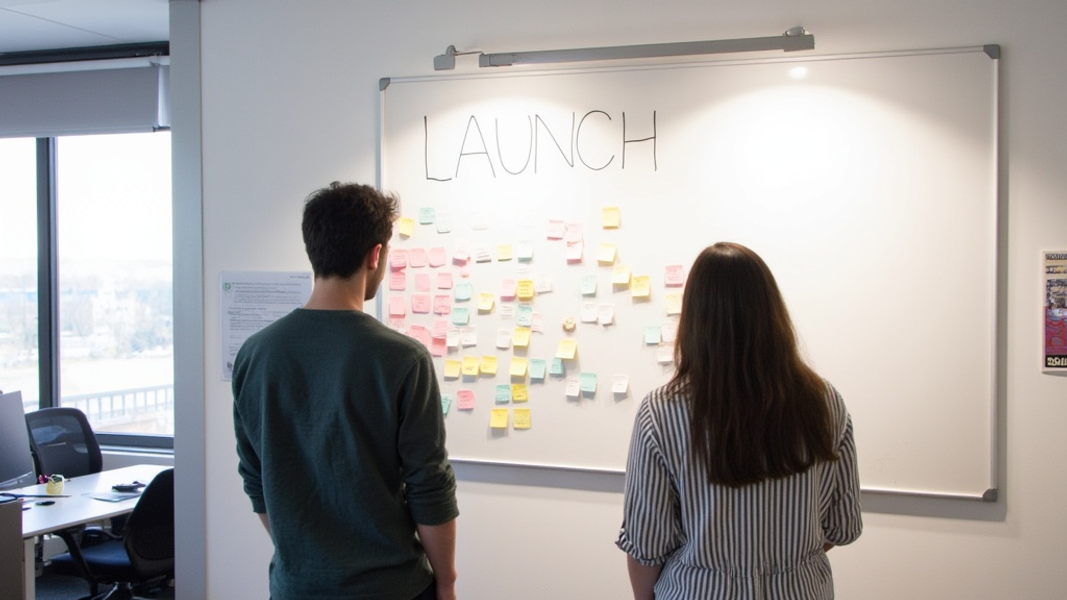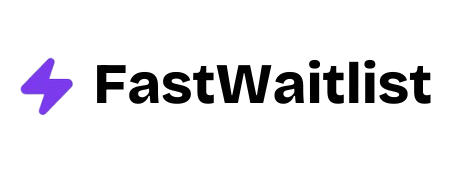
Did you know that 92% of SaaS startups fail within 3 years? Don't let your brilliant idea become another statistic. This guide will walk you through the key steps to successfully launch your SaaS product and stand out in a crowded market.
The SaaS industry is tough. New products pop up daily, and customers have high expectations. But with the right approach, you can beat the odds and create a thriving SaaS business.
Pre-Launch Phase
The pre-launch phase sets the foundation for your SaaS success. It's where you do the groundwork to ensure your product meets real market needs and has a solid chance of success.
Market Research and Validation
Start by getting to know your target audience inside out. Create detailed user personas that represent your ideal customers. These personas should include information like job titles, pain points, and goals.
For example, if you're launching a project management tool, your persona might be "Sarah, a 35-year-old marketing manager who struggles to keep her team's tasks organized and on schedule."
Next, take a close look at your competitors. What features do they offer? How do they price their products? What are customers saying about them in reviews? This information will help you spot gaps in the market and ways to make your product stand out.
Use tools like Google Trends to track interest in related keywords over time. This can give you insights into whether demand for your type of solution is growing or shrinking.
Product Development
With your market research in hand, it's time to define your unique value proposition (UVP). This is a clear statement that explains how your product solves customer problems better than alternatives.
A strong UVP might be: "Our project management tool uses AI to automatically prioritize tasks, saving teams 5 hours per week on average."
Now, build your minimum viable product (MVP). This is a basic version of your SaaS that includes only the core features needed to solve your target audience's main problem. The goal is to launch quickly and start getting real user feedback.
Remember, your MVP doesn't need to be perfect. It just needs to be good enough to test your main assumptions about what customers want and need.
Pricing Strategy
Choosing the right pricing model is crucial for SaaS success. Common options include:
- Freemium: Offer a free basic version with paid upgrades
- Tiered pricing: Different feature sets at different price points
- Usage-based: Charge based on how much customers use your product
- Per-user pricing: Charge a set amount for each user account
Consider your costs, target audience, and competitor pricing when making this decision. Don't be afraid to test different pricing models as you grow.
Building Pre-Launch Buzz
Start generating interest in your product before it's even ready. Create a landing page that clearly explains your UVP and collect email signups from interested potential customers.
Use social media and content marketing to spread the word. Share behind-the-scenes updates, tease features, and offer early access to build excitement.
Consider writing guest posts on relevant industry blogs or appearing on podcasts to reach a wider audience. The key is to start building relationships with potential customers early.

Launch Phase
The launch phase is where all your preparation pays off. It's time to introduce your product to the world and start turning interested leads into paying customers.
Prepare Your Team
Make sure everyone in your company is ready for launch day. This means aligning your sales, marketing, and customer support teams around your product's key messages and features.
Provide thorough product training to all team members. Everyone should be able to explain your product's benefits and basic functionality, even if it's not their primary role.
Create a shared document with FAQs, talking points, and troubleshooting tips. This will help ensure consistent messaging across all customer touchpoints.
Develop Go-To-Market Strategy
Your go-to-market (GTM) strategy outlines how you'll reach and convert your target audience. This should include:
- A detailed marketing plan covering multiple channels (social media, content marketing, paid ads, etc.)
- Sales scripts and product demos tailored to different customer segments
- A plan for handling customer onboarding and support
Consider creating different GTM strategies for different customer segments. For example, you might use different messaging and channels to reach small businesses vs. enterprise clients.
Execute Launch Plan
Set a firm launch date and stick to it. This creates urgency and gives your team a clear goal to work towards.
On launch day, implement your marketing campaigns across all planned channels. This might include:
- Announcing on social media platforms
- Sending emails to your pre-launch list
- Launching on Product Hunt
- Running targeted ads on Google or social media
Monitor your website and product closely for any technical issues. Have a plan in place to quickly address problems that might arise.
Monitor Initial Performance
As soon as you launch, start tracking key metrics like:
- Sign-up rate: How many visitors are creating accounts?
- Activation rate: How many new users are completing key actions in your product?
- Conversion rate: How many free users are upgrading to paid plans?
Use tools like Google Analytics and in-app analytics to gather this data.
Also, start collecting user feedback right away. Send surveys to new users, monitor support tickets, and pay attention to comments on social media. This early feedback is gold for improving your product and marketing.
Post-Launch Phase
The work doesn't stop once your product is live. The post-launch phase is all about refining your product, keeping users happy, and scaling your business.
User Onboarding and Retention
A smooth onboarding process is crucial for turning new signups into active, paying users. Create a clear, step-by-step process that guides users through setting up their account and using key features.
Consider using interactive tutorials, video walkthroughs, or a series of welcome emails to help new users get started.
To boost retention, develop a customer success strategy. This might include:
- Regular check-ins with customers to ensure they're getting value
- Proactively reaching out to users who seem to be struggling
- Creating educational content like blog posts, webinars, or a knowledge base
Remember, it's often cheaper to keep existing customers than to acquire new ones. Put effort into making your current users successful and they'll stick around.
Continuous Improvement
Use the data and feedback you're collecting to continuously improve your product. Prioritize new features and fixes based on their potential impact on user satisfaction and business goals.
Set up a system for regularly reviewing and acting on user feedback. This could be a weekly meeting where your team reviews top feature requests and bug reports.
Don't be afraid to kill features that aren't being used or aren't delivering value. Sometimes, simplifying your product can improve the overall user experience.
Scaling Growth
As you start to see success, it's time to think about scaling. This might involve:
- Expanding your marketing efforts to new channels
- Exploring partnerships or integrations with complementary products
- Targeting new customer segments or markets
Consider creating an affiliate program to incentivize current users to spread the word about your product.

Essential Tools for SaaS Launch
The right tools can make your SaaS launch much smoother. Here are some top picks:
-
Userpilot: Great for creating in-app onboarding experiences and tracking user behavior.
-
HubSpot: An all-in-one platform for marketing, sales, and customer service.
-
Mixpanel: Powerful analytics tool for understanding user behavior in depth.
These tools can help you create a better user experience, manage your marketing efforts, and make data-driven decisions as you grow.
Conclusion
Launching a SaaS product is a big challenge, but with careful planning and execution, you can beat the odds and create a successful business. Remember to:
- Do thorough market research
- Build a product that solves real problems
- Create buzz before you launch
- Execute a well-planned launch strategy
- Keep improving based on user feedback
Stay focused on delivering value to your customers, and you'll be well on your way to SaaS success.
FAQs
How long does it take to launch a SaaS product?
The time to launch can vary widely depending on the complexity of your product and the size of your team. A simple MVP might be ready in 3-6 months, while a more complex product could take a year or more. The key is to launch as quickly as possible with a basic version, then improve based on real user feedback.
How much does it cost to launch a SaaS product?
Costs can range from a few thousand dollars for a basic MVP to millions for a complex, enterprise-grade solution. Key expenses include development, marketing, and ongoing infrastructure costs. Many successful SaaS companies start lean and reinvest revenue into growth.
What's the best pricing model for a new SaaS product?
There's no one-size-fits-all answer. Consider your target market, competitor pricing, and your own costs. Many SaaS companies find success with a freemium model to attract users, combined with tiered pricing for different feature sets. Be prepared to adjust your pricing as you learn more about what customers value.
